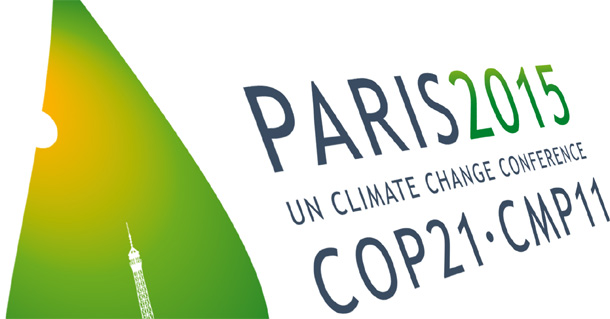By C. P. Srivastava
 The world climate-change talks in Paris this week with 196 nations are poised for a momentous breakthrough. The fact remains that the politicians want a deal so badly that they are ready to accept any anything in any form as an outcome.
The world climate-change talks in Paris this week with 196 nations are poised for a momentous breakthrough. The fact remains that the politicians want a deal so badly that they are ready to accept any anything in any form as an outcome.
President Obama called it a historical turning point, the “moment we finally determined we would save our planet.”
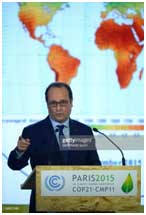 French President François Hollande declared: “Never have the stakes of an international meeting been so high, since what is at stake is the future of the planet, the future of life.”
French President François Hollande declared: “Never have the stakes of an international meeting been so high, since what is at stake is the future of the planet, the future of life.”
And Pope Francis chimed in that “if I may use a strong word I would say that we are at the edge of suicide.”
The International Energy Agency (IEA) estimates developing countries will emit 70% of world CO2 by 2030 and contribute 170% of emissions increases between now and then.The richest 1 per cent of the world’s population on average emits 175 times more carbon than the poorest 10 per cent.
Countries like China would continue their aspiration and commitment of economic growth. They would not succumb to the international pressure of accepting a legally binding agreement. Instead, countries will volunteer their own random carbon emissions-reduction targets and the actions they may or may not take to meet them, with no global goals. They will come out the commitment in the form of Intended Nationally Determined Contributions (INDCs) with no consequences for failing to comply.
But no INDC exposes the Paris farce better than America’s. Mr. Obama promises that the U.S. will reduce CO2 emissions by 26% to 28% from 2005 levels by 2025that would be some 1.8 billion fewer tons of CO2 equivalents in a decade which would be 45% short of the goal. The above reduction include from coal-fired power plants to landfill management to efficiency standards for home appliances etc. which the green diplomats have no idea how to meet the targets they are selling in Paris.
Moreover, nothing that emerges from Paris will have a discernible effect on world temperatures. Researchers at the Massachusetts Institute of Technology studied the INDCs that have been released so far and concluded that temperatures in 2100 will rise 3.7 degrees Celsius. These are the same scientific models that predicted much higher temperatures.
While most nations at Paris seem intent on an agreement that would limit global warming to 2 degrees above pre-industrial times, the more vulnerable countries are still holding out for a deal that would lead to an increase of just 1.5 degrees which has backing of many observers.
Most developing-world INDCs are conditioned on an enormous support on low carbon technology and cheaper funds. Hillary Clinton in 2009 as Secretary of State pledged a $100 billion fund that would flow to poorer nations for climate mitigation. But the developing countries are demanding much more for the “climate justice.”
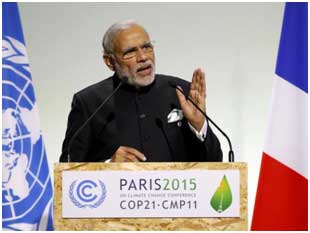 India probably has more at stake in the struggle against global warming than any other large economy represented at this week’s climate summit in Paris. Boosted by the global emission of greenhouse gases into the atmosphere and consequently rise in temperature, India becomes more prone to droughts, floods, crop failures and cyclones.
India probably has more at stake in the struggle against global warming than any other large economy represented at this week’s climate summit in Paris. Boosted by the global emission of greenhouse gases into the atmosphere and consequently rise in temperature, India becomes more prone to droughts, floods, crop failures and cyclones.
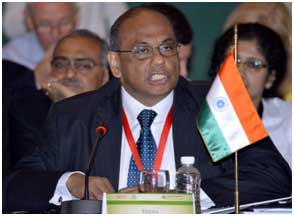 Climate change, says Dr. Ajay Mathur, India’s principal negotiators in Paris, is “amazingly serious” for India just as it is poised to overtake China as the world’s most populous nation.India’s vulnerability to changes in the climate makes it all the more extraordinary that its government is seen as an obstacle to a successful deal, just as previous administrations were accused of obstructing world trade negotiations.
Climate change, says Dr. Ajay Mathur, India’s principal negotiators in Paris, is “amazingly serious” for India just as it is poised to overtake China as the world’s most populous nation.India’s vulnerability to changes in the climate makes it all the more extraordinary that its government is seen as an obstacle to a successful deal, just as previous administrations were accused of obstructing world trade negotiations.
It is argued that two weeks before in Turkey, India blocked efforts by the G20 countries an ambitious climate accord. John Kerry, US secretary of state, recently praised China but expressed concern about the “challenge” of India and its desire to burn more dirty coal for electricity. “We’ve got a lot of focus on India right now to try to bring them along,” he said.
President Barack Obama met President Xi Jinping of China and Narendra Modi, the Indian prime minister, in Paris on Monday to tried to ensure a successful summit. Mr. Modi on his part promised co-operation. “We need power but we will not create problems for the world,” said the Indian prime minister.India which sees itself as a champion of developing countries and a regional rival of China nevertheless insists it has been misunderstood in the lead up to the Paris climate talks.
In 2012, its annual per capita carbon dioxide emissions were just 1.6 tonnes per person, compared with 16.4 tonnes per person for the US and 7.1 tonnes per person for China. By 2030 its emissions will still amount to only about 5 tonnes per person per year, half the level in China.
The Modi government has also launched an ambitious programme to accelerate investment in renewable energy, particularly solar power, so that in 15 years more than a third of its installed electricity capacity will be based on solar energy, windmills and hydroelectric dams.
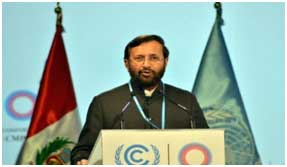 Prakash Javadekar, Indian environment minister, called Mr Kerry’s comments “unwarranted and unfair” and said the real challenge in Paris would be getting developed countries to offer more concessions.Dr. Ajay Mathur was also critical of Mr Kerry. “When action is happening, when the country has said it will agree to an agreement, I find it very surprising when the country is called obstructionist or a challenge,” he said recently.
Prakash Javadekar, Indian environment minister, called Mr Kerry’s comments “unwarranted and unfair” and said the real challenge in Paris would be getting developed countries to offer more concessions.Dr. Ajay Mathur was also critical of Mr Kerry. “When action is happening, when the country has said it will agree to an agreement, I find it very surprising when the country is called obstructionist or a challenge,” he said recently.
India does not deny that its greenhouse gas emissions will increase dramatically in absolute terms — from 1.48bn tonnes of CO2 equivalent annually in 2005 to more than 7bn in 2030 — but says that is because of a growing population and the need to provide electricity to the 300m Indians who lack it today, and the requirement for new coal-fired power stations to supplement other sources of electricity. Half of India’s extra emissions are expected to come from coal.
An acceptable deal — “just” and “equitable” are the words used by India — would have to give India the “carbon space” to develop as other countries did before it. “Either we remain poor or you need to tell us a paradigm by which people can have a better quality of life with lower energy use,” says Dr.Mathur.
India’s promise to cut its greenhouse gas emission intensity relative to gross domestic product by a third while quadrupling absolute emissions is unlikely to be a deal-breaker, given the equally unambitious targets set by other countries.
The sticking point is more likely to be India’s insistence that signatories reaffirm a pledge of $100bn a year in financial flows from rich countries to poor ones from 2020, to help with emissions reduction and climate change adaptation.
India’s domestic cost of capital is high at around 13 per cent and according to the International Energy Agency the country needs to invest $140bn a year on everything from modernising electricity grids for handling fluctuating renewable energy supplies to improved technology for burning coal.
As the talks goes in Paris, India can be accused of two faults in its approach, say analysts and diplomats monitoring the negotiations. First, it has failed to trumpet from the rooftops its relatively low present and future per capita emissions; and second, it may be too pessimistic about likely technological advances that would permit it to adopt more ambitious carbon emission targets.
From a diplomatic point of view, India should overcome the technological pessimism during negotiations. India is bold, confident and apparently unambitious as compared to China’s meaningless carbon emission target.
“India needs its own fair share of carbon space to grow. There are two ways that can happen: either the west can provide the necessary scale of finance and clean technology that will enable India to rapidly deploy renewable energy to power its development, or, the West needs to drastically cut its emissions to allow for rising Indian emissions in the coming years.” Ameya Sathaye, CEO & Editor in Chief, Diplomacyindia.com
Finally, it’s a choice between precise and reasonable, and ambitious and ambiguous…
